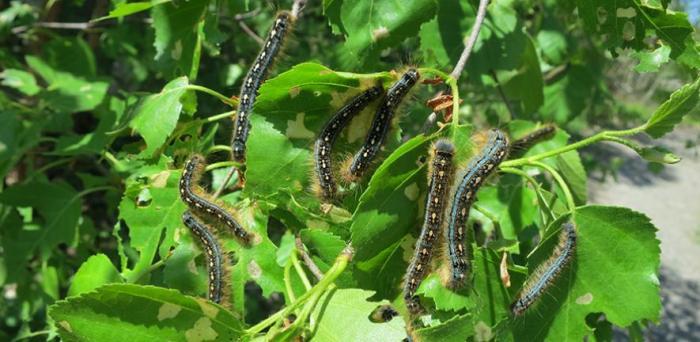Outbreaks of caterpillars of invasive gypsy moths, Lymantria dispar dispar, and forest tent caterpillar moths, Malacasoma disstria occur at least every five years in temperate forests. The insects munch through so many leaves that the resulting decrease in leaf-fall and increase in insect excrement has been found to alter the cycling of nutrients, particularly carbon and nitrogen, between land and nearby lakes on a huge scale.
Nitrogen-rich insect excrement, called frass, can wash into lake water and act as fertiliser for microbes, which then release carbon dioxide into the atmosphere as they metabolise. The researchers suggest that in outbreak years the large quantities of frass will favour the growth of greenhouse gas-producing bacteria in lakes at the expense of algae that remove CO2 from the atmosphere.
“These insects are basically little machines that convert carbon-rich leaves into nitrogen-rich poo. The poo drops into lakes instead of the leaves, and this significantly changes the water chemistry - we think it will increase the extent to which lakes are sources of greenhouse gases,” said Professor Andrew Tanentzap in the University of Cambridge’s Department of Plant Sciences, senior author of the paper.
Northwards range expansion and increased insect population growth is anticipated as the climate changes. This puts northern forests at increased risk of defoliator outbreaks in the future, potentially causing greater quantities of CO2 to be released from nearby lakes.
This northwards shift is also concerning because there are more freshwater lakes further north. And climate change is also expected to favour broadleaved deciduous trees around the lakes, which will amplify the effect of the insects.
The study found that in years with insect outbreaks, the leaf area of forests was reduced by an average of 22%. At the same time, nearby lakes contained 112% more dissolved nitrogen and 27% less dissolved carbon compared to non-outbreak years. The effects were greatest when lake catchments contained higher proportions of deciduous broadleaved trees, such as oaks and maples, which the caterpillars favour over coniferous trees like pines.
To get their results, researchers combined 32 years of government data from insect outbreak surveys and lake water chemistry in 12 lake catchments across Ontario, Canada, and satellite remote sensing data on forest type and monthly leaf area cover. The results are published in the journal Nature Communications.
Image: Outbreak of leaf-eating caterpillars
Reproduced courtesy of the University of Cambridge
